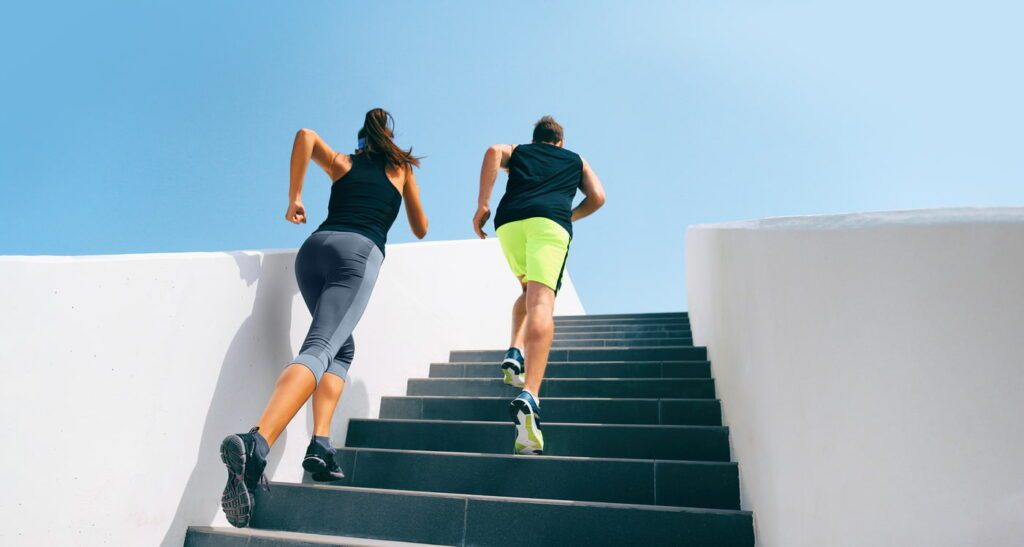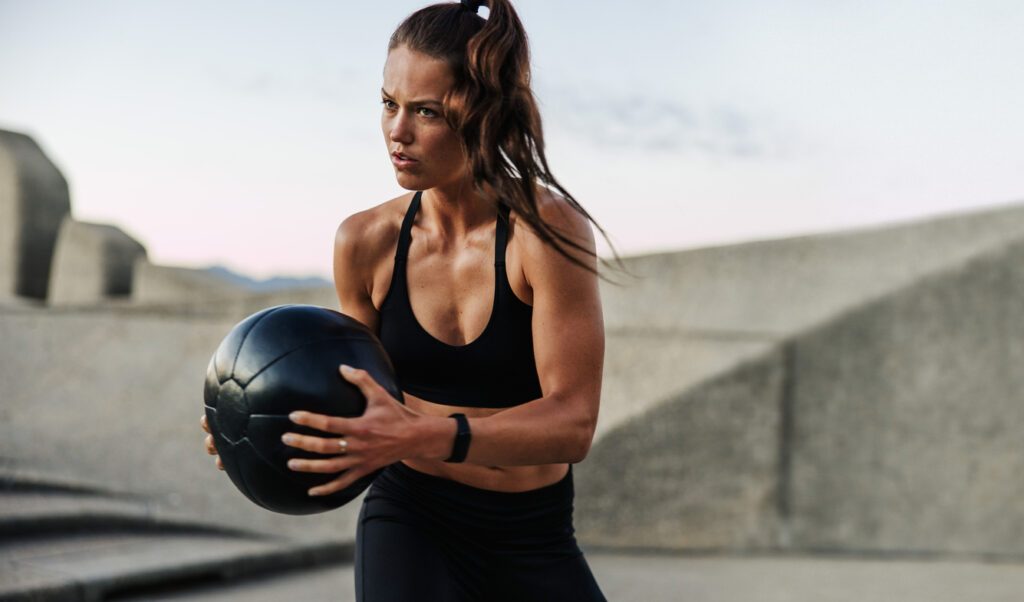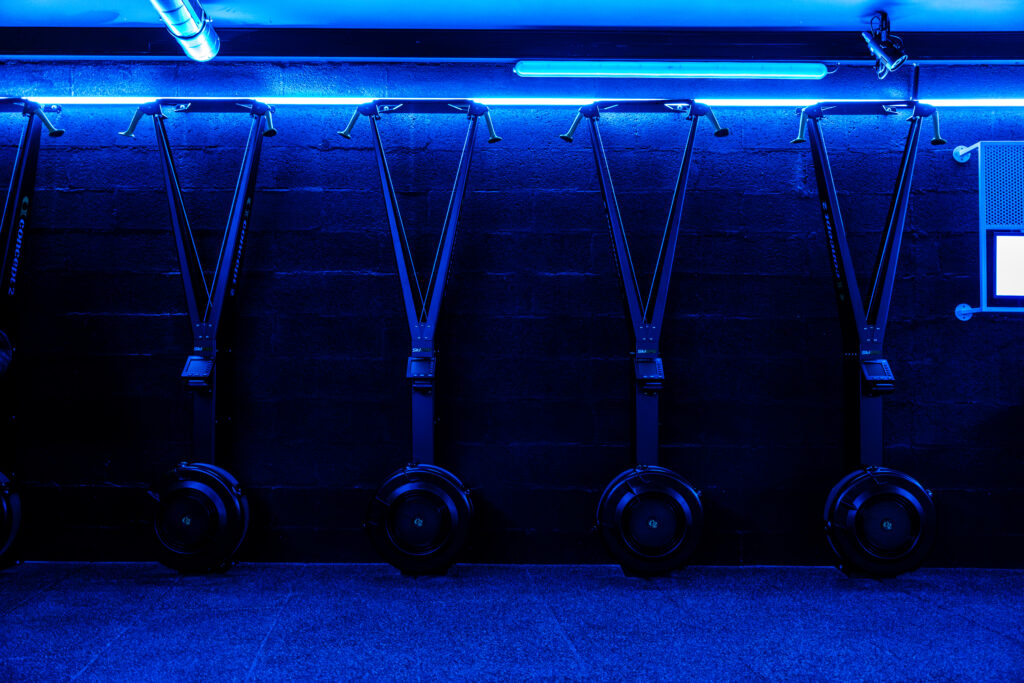
Summary
Welcome / Welcome / Tips for getting started / HIIT running: the benefits of HIIT for running training
HIIT running: the benefits of HIIT for running training
Diving into the world of HIIT can transform your running experience. A HIIT running session not only burns calories, but also refines your endurance. It's the springboard to improved running performance, to surpass your limits!
HIIT is based on high-intensity work intervals followed by recovery periods. This dynamic breathes new energy into your usual running routine. It generates a considerable improvement in cardiovascular capacity, a significant element for runners.
Want to know how to incorporate HIIT into your running routine? Are you looking to optimize your training to gain speed and endurance? Through this article, we will help you reinvent your sessions. Ready to sweat? Let’s go!⚡
Summary
What is HIIT?
THE HIIT, from English High Intensity Interval Training, is a split training method which combines intensity and intervals. It is distinguished by periods of intense exercise, followed by short recovery periods. The goal of HIIT is to push the body to give the best of itself in a short period of time.
In a HIIT session, high-intensity exercises are performed at a maximum effort. These phases are followed by periods of recovery or low-intensity exercise, allowing partial recovery before the next exercise interval.
HIIT is known for its effectiveness in improve cardiovascular fitness, burn calories And strengthen muscles. Her flexibility allows it to be adapted to various fitness levels and goals, making HIIT a popular choice for those seeking a effective and dynamic training.
The benefits of HIIT for running
Improved cardiovascular capacity
HIIT is a workout that focuses on cardiovascular work. The sequence of different exercises, separated by a very limited recovery time, puts a strain on your cardiovascular system. Over the course of training, your system gets used to the intensive effort. So you can better withstand the most intense efforts.
Increased speed and endurance
HIIT allows you to work on your speed in short, repeated intervals. This allows you toimprove your speed without having to train for hours.
You also work on your endurance by putting your respiratory system to the test. The more you train in HIIT, the more you will be able to support intensive efforts. This will also allow you to be more enduring to provide long-term efforts.
Effective calorie burning
With HIIT, you follow different exercises with very little rest. You constantly exert yourself, which will lead to a very high calorie burn, ideal for burning fat.
Even after your session, you will continue to burn calories. We call this theafterburn effect. Your body seeks to return to its state before your workout. To do this, it must use energy, which results in the expenditure of calories.
The more intensive your effort, the more pronounced the afterburn effect will be.
Aerobic and anaerobic development
L'aerobic corresponds to the capacity to train at low or medium intensity, over a long period of time. Running at a moderate speed is an aerobic exercise. Despite the fact that HIIT is an intensive workout, it allows you to improve your aerobic power.
Anaerobic corresponds, conversely, to the capacity to training with higher intensity over a short period of time. Your body uses energy without needing a lot of oxygen. When you do HIIT, you produce an effort in an anaerobic zone.
Muscle and joint strengthening
By including strength training exercises in your HIIT circuit, you will perform muscle strengthening on the muscles that you will use the most during your training.
Strength training allows you to strengthen bone density and the joint flexibility. YOU limit the risk of injury.
HIIT and running: what are the differences?
The differences between HIIT and running are linked to the difference in intensity between these two workouts.
On the one hand, HIIT mainly solicits fast muscle fibers, which allow explosive movements over a short period of time. He also works on anaerobic system and the post-exercise metabolism (the afterburn effect).
On the other hand, classic running works the slow muscle fibers, used when exercising over a long period without great intensity. In addition, running works aerobic system and the regular oxygen consumption during exercise.
How to do HIIT for running?
HIIT should not replace your running session. Perform HIIT workouts in addition, once or twice a week.
HIIT can meet several objectives to help you:
- Strengthen your muscles
- Improve your stamina
- Improve your speed
- Strengthen your joints
The different possible exercises
The sprint
Sprinting is an ideal exercise for doing HIIT. This exercise subjects your body to a very intense and physical effort. It allows to strengthen your leg muscles, but also the joints, THE tendons and the ligaments.
The bike
The bicycle allows a leg muscle strengthening, which helps with running. The more intensive your training, the more you use and strengthen your leg muscles, from the quadriceps to the calves.
Jumping rope
Jumping rope is an exercise that shares a lot in common with running, notably endurance development, there limitation of injuries and the maintenance of bone density.
If you cannot run (lack of time, weather conditions, etc.), you can replace your running session with skipping rope training.
In addition, the jump rope is optimal for HIIT since it allows you to burn as many calories as possible while guaranteeing a muscle strengthening of upper and lower body muscles.
Burpees
Burpees are a very demanding and complete exercise for your body:
- Almost all muscle groups are used;
- They improve your respiratory endurance And cardiovascular ;
- They maintain your metabolism.
The training framework
If you have the opportunity to train outdoors, take the opportunity! Loutdoor training allows in particular to reduce stress hormones, ofimprove mood and D'improve sports performance. For example, wind can create resistance if you run or cycle.
You can also choose to train indoors, whether in the gym or at home. HIIT can be performed without material, you can work out at home with bodyweight exercises if you don't have time to travel.
How to organize your training?
Adapt your HIIT workout depending on your physical condition. This will affect the intensity, duration and frequency of your workouts:
- If you are starting HIIT, we advise you to take recovery time equivalent to your work time (for example 30 seconds of exercise and 30 seconds of rest). Don't realize no more than two HIIT workouts per week.
- If you are more experienced, you can significantly reduce your recovery time (for example, 1 minute of training and 15 seconds of recovery). You will be able to do HIIT three times a week, but be careful to space your workouts well to have enough time to recover.
As you will have understood, your training frequency per week depends above all on your physical condition. If you are wondering about the frequency you can adopt, we wrote an article about it. 👀
The importance of warming up
Before you start your workout, don't forget to warm up. Warming up should not be neglected: it allows you to prepare your joints, your tendons And your muscles, and allows you to limit the risk of injury.
Take at least 5 minutes to warm up before your session. Your warm-up should be done in three stages:
- A cardiovascular warm-up to raise your body temperature and heart rate;
- A joint heating joints that you will be required to use during your training;
- A specific warm-up, that is to say, make dynamic movements that are close to the training you are about to do.
The return to calm
Cooling down is important when performing an intense effort such as HIIT. In fact, it allows gradually decrease heart rate and ventilation. If you suddenly stop after a very intensive workout, you are subjecting yourself to a risk of fainting.
For running, a return to calm can be done while walking, in low speed current or in alternating walking and slow running.
Contraindications
Before embarking on a HIIT workout, pay attention to a few points:
- Don't do HIIT the day after a strenuous run;
- Don't do HIIT if you haven't had enough sleep;
- Don't do HIIT two days in a row;
- Do not do HIIT on an empty stomach;
- Do not do HIIT if you are injured or ill.
It is essential to consult a health professional before starting a HIIT program, particularly if you have pre-existing medical conditions or if you haven't been physically active for a while. A professional can provide you with advice on how you can incorporate HIIT into your workout routine safely and effectively.
The best HIIT running circuits
HIIT running circuit training: sprint and walk
The objective of this training is toimprove speed and endurance. You won't need any materials.
The training lasts for a period of 20 minutes. You must alternate 30 seconds sprint at 90% of your maximum heart rate then 30 seconds of brisk walking.
During fast walking phases, breathe deeply to recover well. Keep good posture during sprint phases.
HIIT running circuit training: skipping rope and squats
This training aims to strengthen joints and of prevent injuries. As we told you previously, jumping rope is an exercise very similar to running.
During 10 minutes, you will alternate 30 seconds of jump rope, 15 seconds of squats And 15 seconds recovery.
HIIT running circuit training: muscle strengthening
This workout is intended for strengthening important muscles for running : THE legs, THE hips and the abdominal strap.
Do 5 burpees, 10 mountain climbers, 10 squats and 15 jumping jacks. Take 30 seconds of rest before leaving. Repeat this circuit 6 times.
HIIT circuit training: the Tabata method
You can opt for the Tabata method. With this method you train intensively in just 4 minutes.
Do 8 cycles of 20 seconds sprint, Then 10 seconds of rest.
Conclusion
If you want to improve your running performance, try including HIIT sessions in your sports routine. With this method you can improve your speed, your endurance, strengthen your muscles and joints or losing weight.
This workout is adjustable. In particular, you can change the intensity of your session depending on your physical condition. Work intervals and rest times will be shorter or, conversely, longer according to your level. Furthermore, there exists a wide variety of exercises that you can include in your program to work on a particular skill.
HIIT being very strenuous, consult a healthcare professional if you have a medical history, to find out if you can practice it.
HIIT at DRIP
Tempted by HIIT? We got you! DRIP is 50 minute workout inspired by HIIT and circuit training.
The DRIP formula is: 7 bases, 3 rounds, 1 minute per base. You chain each base with very little recovery. Get ready, you're going to sweat!🥵
Our goal: to push you to surpass yourself, in an atmosphere that highlights the good mood And team spirit !
In our studio, there is no room for judgment. Whatever your level, you are welcome to let off some steam!
SO, does it heat you up? In this case, we find ourselves at DRIP studio in the 8th arrondissement of Paris, 50 rue Monceau. You'll love to hate us!❤️🔥
Share
Tagged
Read also
follow us
on instagram
To follow all our news,
take advantage of our tutorials and participate
in our many competitions.
BREAKING NEWS!
Receive our newsletter.





